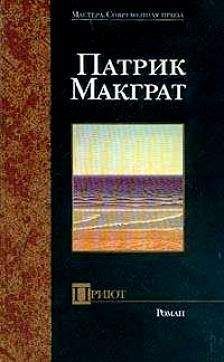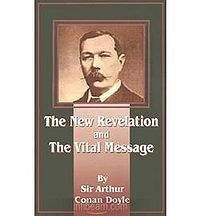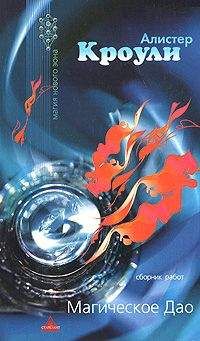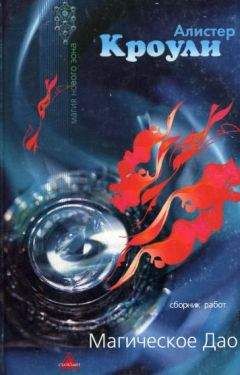Алистер Макграт - Кто изобрел Вселенную? Страсти по божественной частице в адронном коллайдере и другие истории о науке, вере и сотворении мира
69
Jack Morrell, Arnold Thackray, «Gentlemen of Science: Early Years of the British Association for the Advancement of Science», Oxford: Oxford University Press, 1981, p. 395.
70
Matthew Stanley, «Huxley’s Church and Maxwell’s Demon: From Theistic Science to Naturalistic Science», Chicago: University of Chicago Press, 2015, pp. 242–63.
71
http://scienceblogs.com/pharyngula/2007/06/14/high-priest-epstein-in-newswee/
72
Mary Midgley, «Are You an Illusion?» Durham: Acumen, 2014, p. 5.
73
Peter Medawar, «The Limits of Science», Oxford: Oxford University Press, 1987, p. 66.
74
Roy Baumeister, «Meanings of Life», New York: Guilford Press, 1991, pp. 29–57.
75
Ludwig Wittgenstein, «Philosophical Investigations», 3nd ed., Oxford: Blackwell, 1968, p. 48.
76
Midgley, «The Myths We Live By», pp. 26–8.
77
Mary Midgley, «Dover Beach» (неопубликованное эссе), цит. по Nelson Rivera, «The Earth is Our Home: Mary Midgley’s Critique and Reconstruction of Evolution and its Meanings», Exeter: Imprint Academic, 2010, p. 179 n. 21.
78
Mary Midgley, «Wisdom, Information, and Wonder: What Is Knowledge For?» London: Routledge, 1995, p. 199.
79
Roy Bhaskar, «The Possibility of Naturalism: A Philosophical Critique of the Contemporary Human Sciences», 3nd ed., London: Routledge, 1998.
80
См., например, Leslie Stevenson, David L. Haberman (eds), «Twelve Theories of Human Nature», New York: Oxford University Press, 2012.
81
F. H. T. Rhodes, «Christianity in a Mechanistic Universe», в кн.: «Christianity in a Mechanistic Universe and Other Essays», ed. D. M. MacKay, London: InterVarsity Press, 1965, pp. 11–50, цитата на p. 42.
82
Christian Smith, «Moral, Believing Animals: Human Personhood and Culture», Oxford: Oxford University Press, 2009, p. 64.
83
Elinor Ochs and Lisa Capps, «Narrating the Self», «Annual Review of Anthropology» 25, 1996, pp. 19–43.
84
Hendrik L. Bosnian, «Origin and Identity: Rereading Exodus as a Polemical Narrative Then (Palestine) and Now (Africa)», «Scriptura» 90, 2005, pp. 869–77.
85
Интересное междисциплинарное исследование – Lewis P. Hinchman, Sandra K. Hinchman (eds), «Memory, Identity, Community: The Idea of Narrative in the Human Science», Albany, NY: State University of New York Press, 1997.
86
См. в особенности C. S. Lewis, «Is Theology Poetry?», в кн. «Essay Collection», London: HarperCollins, 2002, pp. 1–21. О том, что для Льюиса литературоведческое понятие «мифа» соответствовало метанарративу, см. Alister E. McGrath, «A Gleam of Divine Truth: The Concept of Myth in Lewis’s Thought», в кн. «The Intellectual World of C. S. Lewis, Oxford: Wiley-Blackwell, 2013, pp. 55–82.
87
Smith, «Moral, Believing Animals», pp. 63–94.
88
Важные соображения на этот счет см. в работе Cristine Legare, E. Margaret Evans, Karl S. Rosengren, Paul L. Harris, «The Coexistence of Natural and Supernatural Explanations across Cultures and Development», «Child Development» 83, no. 3, 2012, pp. 779–93.
89
Яркий пример – возрожденческая метафора «двух книг», о науке и религии; см. Giuseppe Tanzella-Nitti, «The Two Books Prior to the Scientific Revolution», «Annales Theologici» 18, 2004, pp. 51–83.
90
«Учить тому, как жить без уверенности и в то же время не быть парализованным нерешительностью – это, пожалуй, главное, что может сделать философия в наш век для тех, кто занимается ею» (Пер. В. Целищева). Bertrand Russell, «A History of Western Philosophy», London; George Allen & Unwin Ltd, 1946, p. xiv.
91
Richard Dawkins, «The Selfish Gene», 2nd ed., Oxford: Oxford University Press, 1989, p. 330.
92
Хорошее описание истории «лысенковщины» в сороковые годы см. в книге Nikolai L. Krementsov, «Stalinist Science», Princeton, NJ: Princeton University Press, 1997, pp. 54–83.
93
Превосходное исследование этой тяги и ее последствий для медицины – Mark H. Waymack, «Yearning for Certainty and the Critique of Medicine as “Science”», «Theoretical Medicine and Bioethics» 30, no. 3, 2009, pp. 215–29.
94
Henry Miller, «Big Sur and the Oranges of Hieronymus Bosch», New York: New Directions, 1957, p. 25.
95
Carl Sagan, «Why We Need To Understand Science», «Skeptical Inquirer» 14, no. 3, Spring 1990.
96
Charles Gore, «The Incarnation of the Son of God», London: John Murray, 1922, pp. 105–6.
97
Научная сторона дела изложена в кн. Helge Kragh, «Conceptions of Cosmos: From Myths to the Accelerating Universe: A History of Cosmology», Oxford: Oxford University Press, 2007, pp. 46–65.
98
См. классическую работу Thomas S. Kuhn, «The Copernican Revolution», New York: Random House, 1959.
99
Очень доступное изложение этой истории см. в кн. Allan Chapman, «Stargazers: Copernicus, Galileo, the Telescope and the Church», Oxford: Lion, 2014.
100
Сборник статей ведущих исследователей, излагающих разные точки зрения по этому поводу, – Bernard Carr (ed.), «Universe or Multiverse?» Cambridge: Cambridge University Press, 2007.
101
Abigail J. Lustig, «Darwin’s Difficulties», в кн. «The Cambridge Companion to the “Origin of Species”», ed. Michael Ruse and Robert J. Richards, Cambridge: Cambridge University Press, 2009, pp. 109–28.
102
Pietro Corsi, «Before Darwin: Transformist Concepts in European Natural History», «Journal of the History of Biology» 38, 2005, рр. 67–83.
103
Charles Darwin, «Origin of Species», London: John Murray, 1859, p. 171.
104
Hugh G. Gauch, «Scientific Method in Practice», New York: Cambridge University Press, 2003, p. 152.
105
Richard Dawkins, «A Devil’s Chaplain», London: Weidenfield & Nicholson, 2003, p. 81.
106
William T. Scott and Martin X. Moleski, «Michael Polanyi: Scientist and Philosopher», Oxford: Oxford University Press, 2005.
107
Leon M. Lederman, «The God Particle: If the Universe Is the Answer, What Is the Question?» Boston: Houghton Mifflin, 1993. Относительно недавняя работа по той же теме – Leon M. Lederman, Christopher T. Hill, «Beyond the God Particle», Amherst, NY: Prometheus Books, 2013.
108
Sami Paavola, «Peircean Abduction: Instinct, or Inference?», «Semiotica» 153, 2005, pp. 131–54.
109
Текст этого выступления воспроизведен в August Kekulé, «Benzolfest Rede», «Berichte der deutschen chemischen Gesellschaft Zu Berlin» 23, 1890, pp. 1302–11.
110
См. собрание эссе Mark Boda, Gordon T. Smith (eds), «Repentance in Christian Theology», Collegeville, MN: Liturgical Press, 2006.
111
Kathleen Norris, «Dakota: A Spiritual Geography», New York: Houghton Mifflin, 2001, p. 197.
112
N. R. Hanson, «Patterns of Discovery: An Inquiry into the Conceptual Foundations of Science», Cambridge: Cambridge University Press, 1961.
113
G. K. Chesterton, «The Return of the Angels», «Daily News», 14 марта 1903 года.
114
W. V. O. Quine, «Two Dogmas of Empiricism», в кн. «From a Logical Point of View», 2nd ed., Cambridge, MA: Harvard University Press, 1951, p. 42.
115
C. S. Lewis, «Surprised by Joy», London: HarperCollins, 2002, p. 201. См. также Alister E. McGrath, «An Enhanced Vision of Rationality: C. S. Lewis on the Reasonableness of Christian Faith», Theology 116, no. 6, 2013, pp. 410–17.
116
Lewis, «Surprised by Joy», p. 197.
117
Это утверждение содержится в рукописи, получившей название «Early Prose Joy», которая хранится в Центре им. Уэйда в Уитонском колледже, в Иллинойсе.
118
Об этом, в частности, см. Scott A. Kleiner, «Explanatory Coherence and Empirical Adequacy: The Problem of Abduction, and the Justification of Evolutionary Models», «Biology and Philosophy» 18, 2003, pp. 513–27; David H. Glass, «Coherence Measures and Inference to the Best Explanation», «Synthese» 157, 2007, pp. 275–96; Stathis Psillos, «The Fine Structure of Inference to the Best Explanation», «Philosophy and Phenomenological Research» 74, 2007, pp. 441–8.
119
C. S. Lewis, «ls Theology Poetry?», в кн. «C. S. Lewis: Essay Collection», London: Collins, 2000, p. 21.
120
Прекрасный (и относительно популярный) обзор М-теории см. в Neil Lambert, «M-Theory and Maximally Supersymmetric Gauge Theories», «Annual Review of Nuclear and Particle Science» 62, 2012, рр. 285–313.
121
Peter Woit, «Not Even Wrong: The Failure of String Theory and the Search for Unity in Physical Law», London: Jonathan Cape, 2006, p. 167.
122
C. S. Lewis, «The Poison of Subjectivism», в «Essay Collection», p. 250.
123
William James, «The Will to Believe», New York: Dover Publications, 1956, p. 51.
124
Terry Eagleton, «Reason, Faith, and Revolution: Reflections on the God Debate», New Haven, CT: Yale University Press, 2009, p. 7.
125
Simone Weil, «First and Last Notebooks», London: Oxford University Press, 1970, p. 147.
126
Peter B. Medawar and Jean Medawar, «The Life Science: Current Ideas of Biology», London: Wildwood House, 1977, p. 171.
127
Richard Dawkins, «River out of Eden: A Darwinian View of Life», London: Phoenix, 1995, p. 133.
128
Henry A. Wolfson, «Patristic Arguments against the Eternity of the World», «Harvard Theological Review» 59, 1966, pp. 351–67; Richard Sorabji, «Time, Creation and the Continuum», Ithaca, NY: Cornell University Press, 1983.




